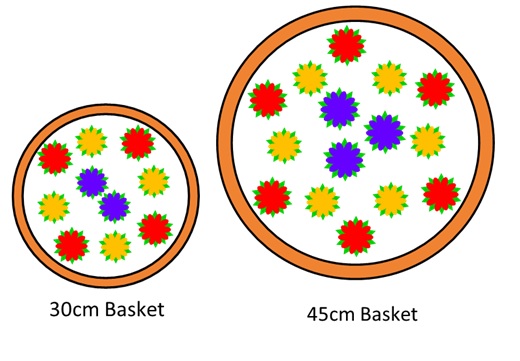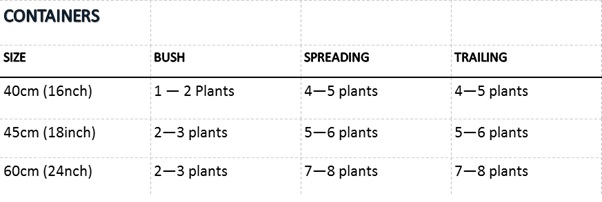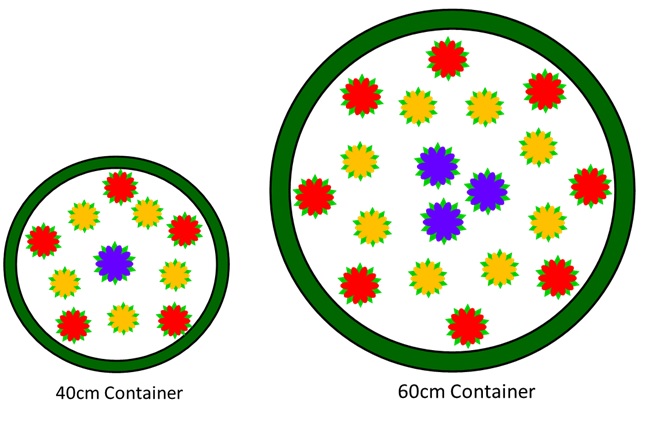How to Plant
How to Plant
Having purchased your plants you should grow them on as suggested in our Growing On information which you will find on Our Products page. This will give you good sized plants ready to plant into Baskets or Containers for placing outside when all danger of frost has passed. This is the time to be creative either using our Colour trends Ideas or a colour blend of your own. There are a few simple considerations and a basic planting procedure.
Planning
Before you start, work out how many plants you need for each basket and container, considering the plant habits and how each plant will develop. KinderGarden use a simple habit classification to help you:
Plant habits vary considerably, understanding their basic form is the key to selecting the right plant for a particular position in the garden, a basket or your favourite container. We have categorised all our varieties into three general habit types. These are colour coded at the top of each of our picture cards and printed on the label sleeves just below the variety name.
BUSH
Definition: these varieties display a growth form that is basically upright with a height greater or equal to its width at maturity.
Use: as a rear or central planting in baskets or containers to provide height.
Examples: Zonal Geraniums, Upright Fuchsia
SPREADING
Definition: these items have a growth that is basically prostrate or flat having a spread or width greater than their height at maturity.
Use: These are the most versatile of subjects. Use to great effect as mass planting or in baskets and containers either on their own, when they will creep over the edge of the basket/container, or in mixed plantings where they will ‘fill in’ the gaps between bush and trailing varieties.
Examples: Calibrachoa, Diascia, Nemesia, Verbena
TRAILING
Definition: plants having a habit that has little height preferring to creep over the edge of its container or basket and ‘trail’ over the side. Some of these cascade straight over the edge while others tumble more gracefully
Use: In basket, window boxes and tall containers. These varieties are planted towards the outer rim where their natural habit can develop freely.
Example: Lobelia, Trailing Petunia, Surfinia, Ivy Geranium
Having identified your plants by habit and colour you can now plan your creative planting.
The following is a general guide to how many plants are required when planting up mixed baskets and containers. Single variety plantings may require more or less plants subject to the vigour and habit of the variety selected. These are just guidelines for example when planting a container you may wish to replace the trailing plants with more spreading varieties.



 Basic Planting procedure:
Basic Planting procedure:
Fill your basket or container to within 2cm of the top using a fresh good quality compost, at this stage it is a good idea to mix in a slow release fertilizer which will continue to feed your plants throughout the summer. Lightly firm the compost.
Starting at the centre plant your Bush varieties spacing them evenly. Make a hole large enough to take the root ball, firm them in, when planted the top surface of the root ball should be level with the compost in the basket or container.
Next plant the Spreading plants in the same manner and again with the Trailing.
Water in well, thereafter water only as necessary, allowing the surface of the compost to dry out between watering. If you have incorporated a slow release fertilizer your plants should not need further feeding, if not apply a liquid feed when watering as per the manufactures recommendation.
Keep an eye out for any pests and deal with them appropriately as soon as they are spotted. Removal of dead flower heads will encourage further flowering.
Now sit back and enjoy the show.